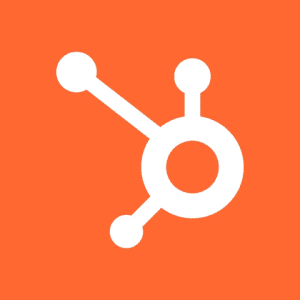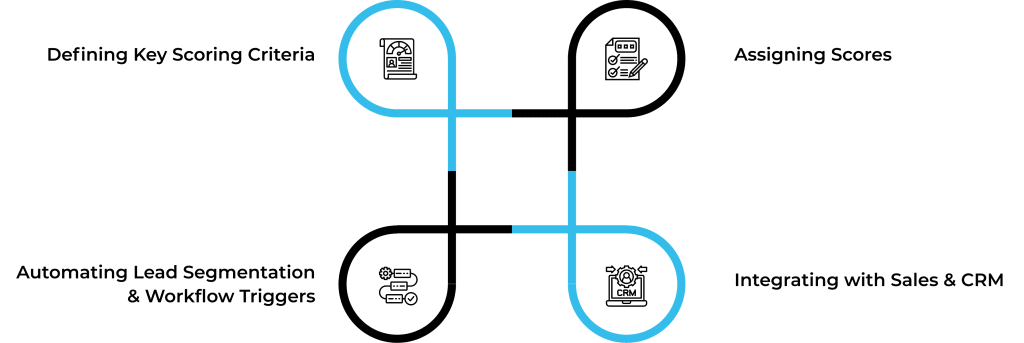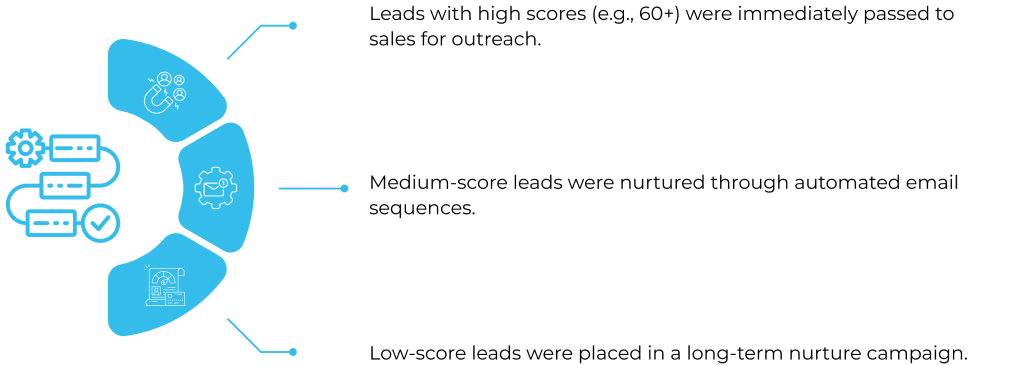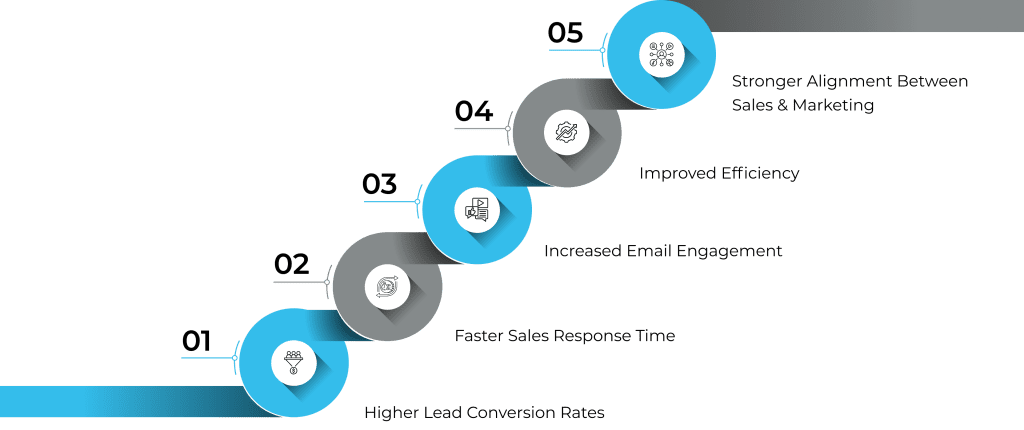Optimizing Lead Conversion with HubSpot Lead Scoring
In today’s competitive market, prioritizing high-quality leads is crucial for sales and marketing success. Without an effective system, businesses waste time on unqualified leads, reducing efficiency and revenue. To address this challenge faced by the client we implemented HubSpot Lead Scoring—an automated system that ranks leads based on engagement, behavior, and demographics. This case study highlights the client’s transition from manual evaluation to a data-driven strategy, demonstrating the impact of HubSpot’s powerful lead-scoring system.
About the Client
The client is a USA-based nation’s leading supplier of wide-format touchscreen workstations for plan review and management, and they manufacture their own USA-made touchscreen monitor stands. They serve a diverse range of businesses and provide high-quality, durable, and innovative workstation solutions tailored to industrial and commercial needs.
Industry: Manufacturing and Supplying.
Company Size: 50+ employees
Location: United States
Use Case:
Eliminate Manual work and Adopt Automation.
Tools Used
Challenges Faced Without HubSpot Lead Scoring
Before implementing HubSpot Lead Scoring, our client team struggled with several key challenges:

- Lack of Prioritization: Sales teams were spending equal effort on all leads, regardless of their interest level or readiness to buy.
- Inefficient Follow-ups: Leads who had shown significant engagement (e.g., multiple website visits, and email interactions) were not prioritized for immediate follow-up.
- Low Conversion Rates: Without a structured approach, unqualified leads were frequently passed to sales, leading to lower closing rates.
- Manual Process: The sales team relied on intuition rather than data-driven insights, making the lead qualification process inconsistent.
- Missed Opportunities: High-potential leads were slipping through the cracks due to the lack of an automated system to track engagement.
The Solution: Implementing HubSpot Lead Scoring
To overcome these challenges, we implemented HubSpot’s Predictive and Custom Lead Scoring system. The process involved:

Defining Key Scoring Criteria
We worked closely with the sales and marketing teams to define lead attributes and behaviors that indicate buying intent. These included:
- Demographic Factors: Industry, job title, company size, location.
- Behavioral Factors: Website visits, form submissions, email engagement, webinar attendance.
- Negative Scoring: Unsubscribes, spam reports, inactivity over a certain period.
Assigning Scores
Using HubSpot’s custom scoring model, we assigned:
- Positive Scores: For actions indicating strong interest (e.g., +10 for visiting the pricing page, +5 for attending a webinar).
- Negative Scores: For disengagement signals (e.g., -10 for email unsubscribes, -5 for no activity in 60 days).
Automating Lead Segmentation & Workflow Triggers

Integrating with Sales & CRM
- Sales teams received notifications when a lead crossed a score threshold.
- The CRM dashboard displayed lead scores, ensuring sales reps focused on high-potential leads first.
Results Achieved
After implementing HubSpot Lead Scoring, we observed significant improvements:

- Higher Lead Conversion Rates: Sales teams focused on high-intent leads, leading to more successful deals.
- Faster Sales Response Time: High-scoring leads were contacted much sooner, increasing the likelihood of conversion.
- Increased Email Engagement: Targeted follow-ups based on lead activity resulted in more interactions and better engagement rates.
- Improved Efficiency: The sales team saved valuable time by focusing on the most promising leads instead of chasing low-quality prospects.
- Stronger Alignment Between Sales & Marketing: With clear lead qualification metrics, both teams were more synchronized in engaging prospects.
Conclusion
HubSpot Lead Scoring transformed our lead management process by introducing a data-driven, automated, and efficient way to prioritize and convert leads. Our sales and marketing teams achieved better collaboration and significantly improved conversion rates by eliminating guesswork, reducing wasted effort, and ensuring timely follow-ups. This case study highlights the power of lead scoring in maximizing sales efficiency and driving revenue growth.